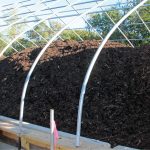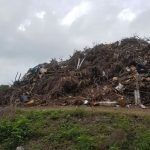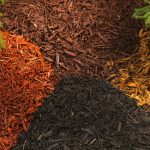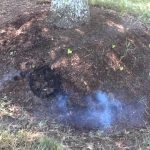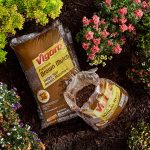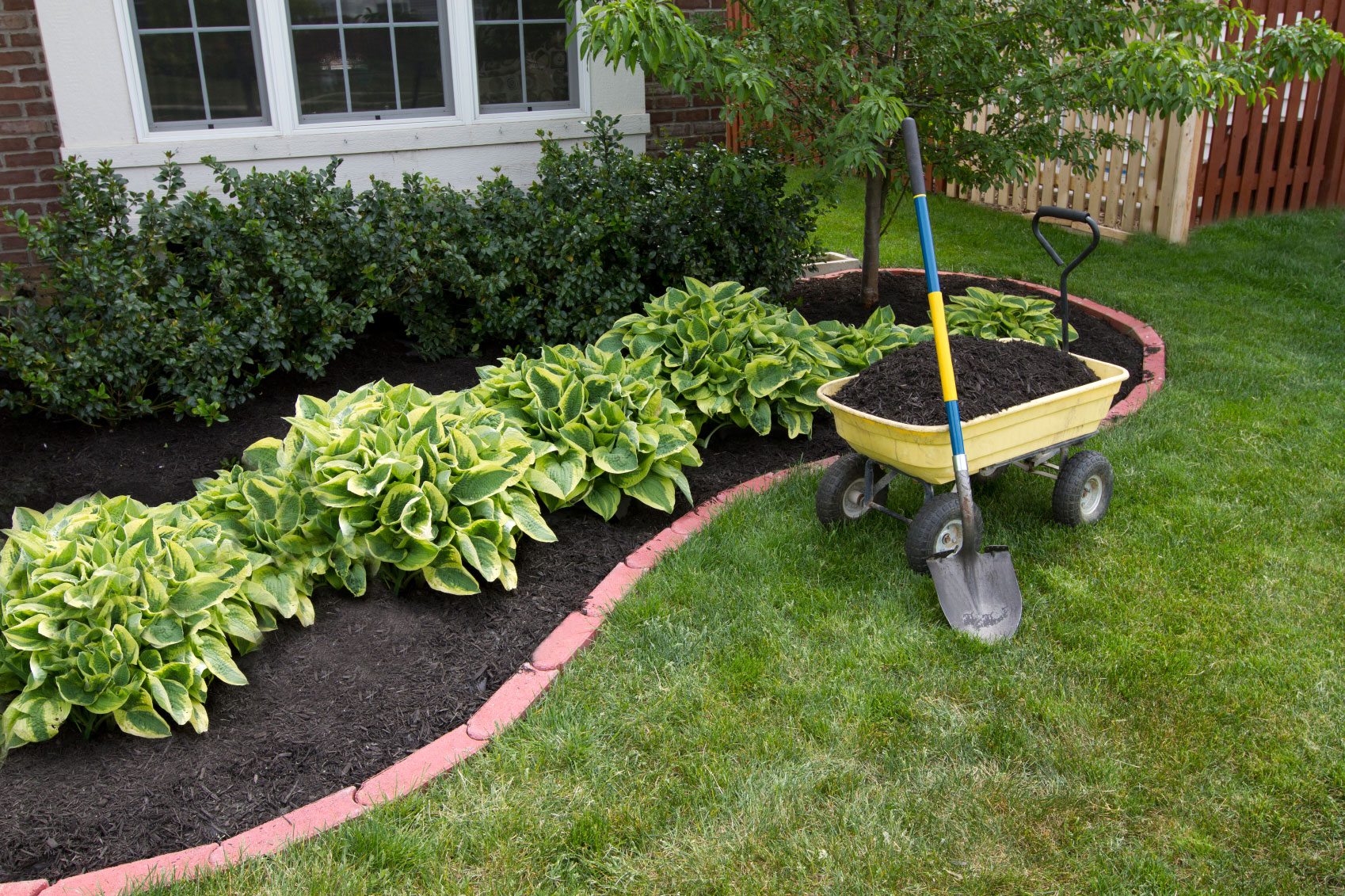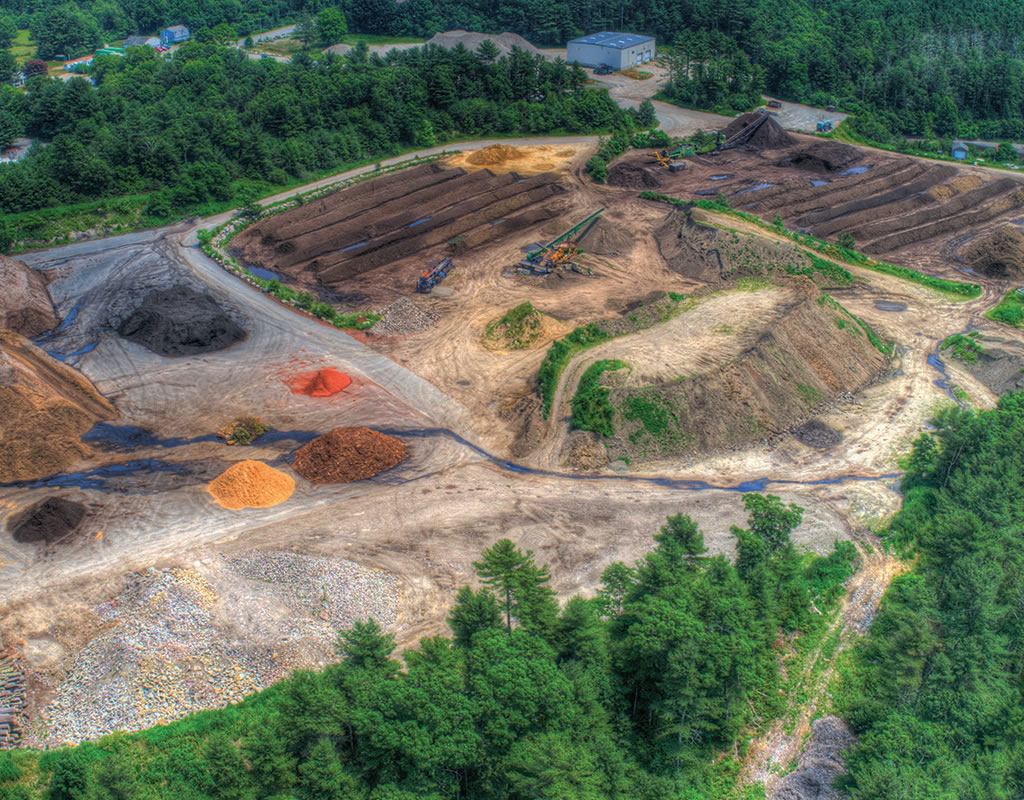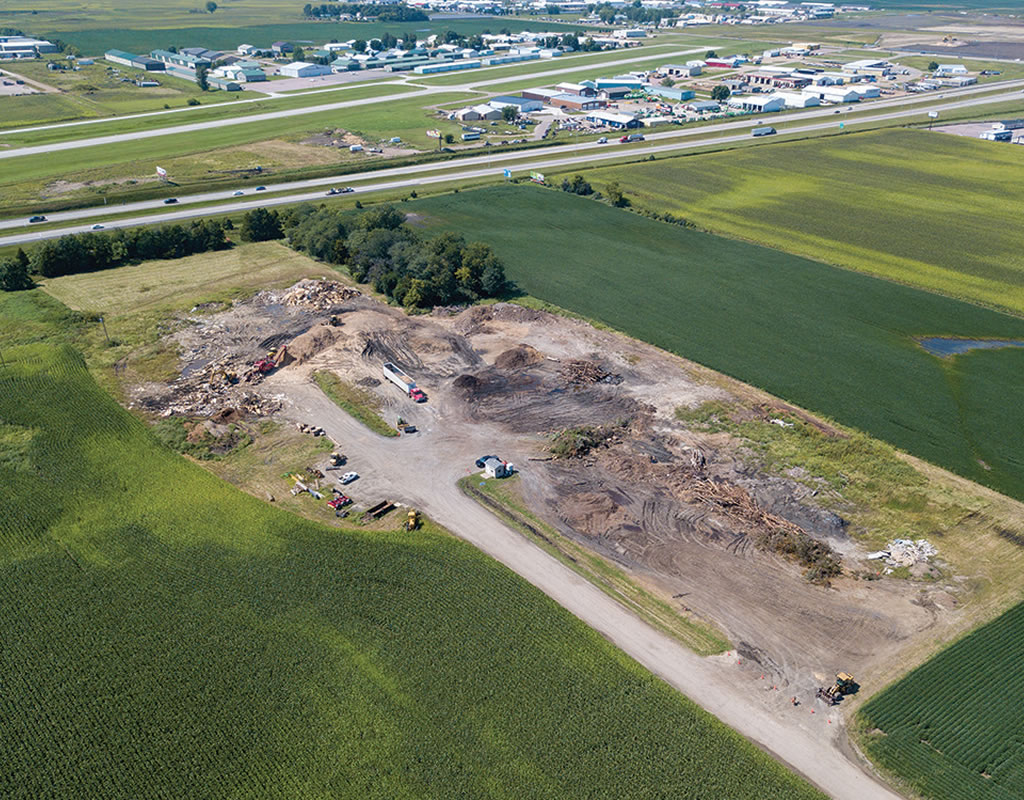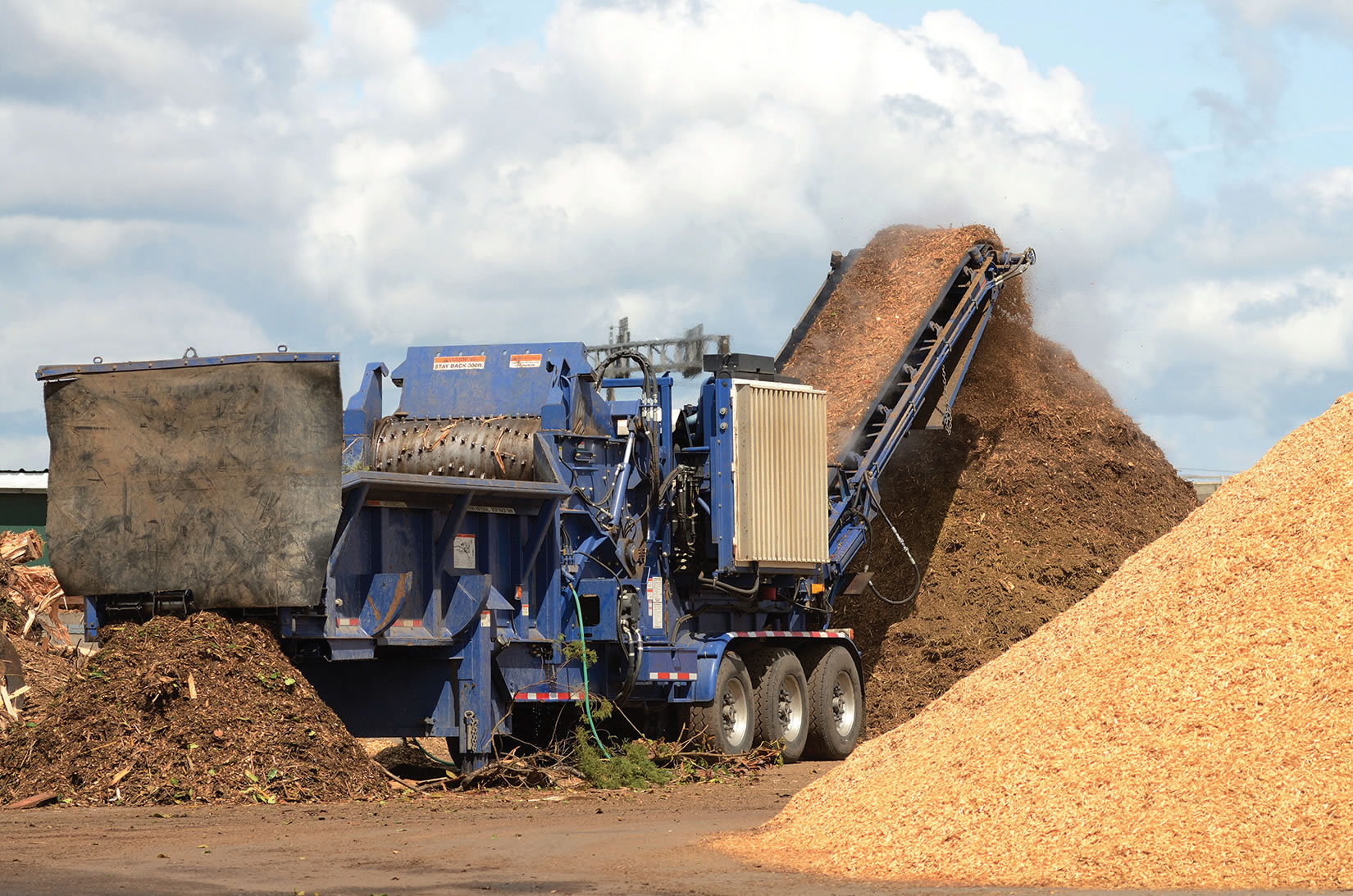By Ken McEntee
By most anecdotal accounts, mulch industry sales were up in 2016 compared to 2015. Survey responses and conversations with mulch producers from around the U.S. suggested that colored mulch continued to gain in popularity, while consumers increasingly are gravitating toward bagged products over bulk, primarily due to convenience of transporting and spreading the material.
“I think sales are trending upward,” said Robert LaGasse, executive director of the Mulch and Soil Council. “There are always cyclical trends. The weather is our worst enemy and our best friend. It varies widely across the country, but in general I would say that 2016 was a good year.”
He said colored mulch now accounts for almost 70 percent of the market.
“If you would have told me 10 to 12 years ago that colored mulch would be 60 to 70 percent of the market I would have laughed,” he said. “We’re now even colorizing natural materials because consumers are demanding longevity.”
LaGasse said he is optimistic that the home construction business in improving and will continue to do so in the upcoming year, which will likely drive up demand for mulch and landscaping products.
“New home construction hurt us in the 2008 to 2016 period, but that has been improving,” LaGasse said.
Better sales
Most producers contacted for this article said they are optimistic about their prospects in 2017. Richard Newton, of Eastern Red Cedar Products, Marengo, Ind., said 2016 sales of both bulk and bagged products were about the same as in 2015. In 2017, Newton says, he expects to sell “All we can move.”
Billy Stinson, of Yard Works LLC, Mosely, Va., said he anticipates a 10 percent improvement in sales for bulk and bagged products compared to 2016.
“We expect demand to remain high,” Stinson said.
In 2016 the company increased its sales in bulk mulch by approximately 35 percent, and bagged mulch sales increased by 375 percent.
“Our best seller in both bulk and bagged products was dark walnut colored mulch,” he said.
In Gettysburg, Pa., Matthew Nolt, president of Nolt’s Mulch Products, said his sales were up 15 percent in 2016 compared to the prior year, driven mainly by demand for black colored mulch, which he sells in bulk.
“I expect that sales will probably be just as good this year, or better,” Nolt said.
Duffy Layton, owner of Duffy Layton Inc., Stanfordville, N.Y., said wood mulch sales for his fiscal year 2016 had already exceeded the previous year’s sales with almost five more months to go.
“We definitely sold more of all our mulches in 2016 and it seems to have steadily increased for the last three years in our area,” Layton said. “Our compost mulch sales seem to grow quicker – we sell more compost mulch than all of our wood mulches, including natural black, brown and red, combined. Our leaf compost has really taken off as well.”
Layton said he had sold almost 1,700 yards of wood mulch so far in FY2016, compared to about 2,600 yards of compost mulch.
Cornie Brouwer, co-owner of B&B Bedding Inc., Oskaloosa, Iowa, said he expects to realize a 5-10 percent increase in sales in 2017 – mainly because of more retail distribution locations.
“We’ve been in business since 1989 and sales have gotten better every year,” Brouwer said. “This year we’ve been awarded a larger customer base with more stores in a big chain. We think the housing market will be stronger this year. Unemployment is down and people seem to have some more money to spend. So hopefully demand will be a little higher.”
A trend Brouwer noted is the consolidation of mulch product lines at retail centers.
“Some of our customers are pairing down their SKUs (Stock Keeping Units),” he said. “They are telling us that they want to narrow it down to five or six products instead of seven or eight.”
B&B improved its sales in bulk mulch by about 6 percent last year, and sales of bagged mulch increased approximately 15 percent. Colored red mulch is the company’s largest seller among bagged products, while the most popular bulk product is natural hardwood mulch.
Following a decrease in sales between 2014 and 2015, P.R. Russell Mulch and Soil Products, Brentwood, N.H., had a better year in 2016, a company spokesperson said. Bulk mulch sales were up over 11 percent, and bagged mulch sales increased by approximately 25 percent.
Although Russell doesn’t anticipate increased sales in bulk products this year, the company expects a small improvement in bag sales.
“In this company we see a lot more opportunity in bags,” the spokesperson said. “Any growth we see in bulk in the coming years will probably be from taking additional market share and not so much from an increase in the overall market.”
She said she anticipates that landscapers in the northeast could follow the trend that is currently more prominent in the south – using more bagged mulch for convenience.
“The economy is a big factor in this business,” she said. “As much as mulch is seen as a commodity, it is still a luxury for the homeowners, so if they are feeling confident in the economy, and their jobs, they are more likely to spend more money on their houses. If they are afraid, mulching is something they might skip and do every other year instead of every year. It is something we are always paying close attention to.”
While 2016 bulk sales at Sylva Corp., Princeton, Minn., were about on par with 2015, Larry Doose, president and CEO, said bagged sales climbed by 45 percent. He said he expects continued growth.
“We have been in the mulch business for almost 30 years and we’re seeing a very stable market all the way around,” he said. “Over the last few years the trend has been stability. Even in the recession mulch did better than a lot of other products, so our forecast is that demand will be up for both bagged and bulk products.
Doose said his best selling bagged product is red colored mulch, while his most popular bulk mulch is a dark brown colored product called Mink.
Devalued in the market
Eric Laszewski, of Waupaca Northwoods, Waupaca, Wisc. said colored mulch continues to dominate the market. However, he said, the product is being devalued by national retail chains.
“The big box stores have made the decision to feature this product and price it as a commodity item, so colored mulch has been devalued in the market,” Laszewski said. “Sales of other bark mulch products have been cannibalized by this strategy. You have Walmart out there everyday selling it at $1.98 a bag. You have Lowes and Home Depot going five for $10, so that’s what’s driving increased sales on our end for that stuff. I am shipping truckloads of colored mulch to them, but I am locked into it. Product mix is what we thrive on. The big boxes have people coming in for the colored mulch at the commodity price, and they can then sell them some other stuff to make money. I don’t have that same luxury. Mulch is what I sell.”
Laszewsky is somewhat less optimistic about the upcoming year than some other mulch producers.
“I see a little bump in sales, but I don’t think it will be huge,” he said. “I don’t see a whole bunch of additional people coming up to buy mulch. I think we’re seeing what the market can bear right now.”
Matt Smith, plant manager of Smith Creek, Borden, Ind., is even less optimistic.
“Our sales didn’t change in 2016 compared to 2015,” Smith said. “I anticipate a decrease this year because the market for wood in our area has decreased which has put more pressure on the sawmills, and I have more competition. We will try to find new products outside of the mulch market.”
LaGasse said increased competition for raw material – mainly due to biomass subsidies – has driven up business costs for many mulch producers. He said he is optimistic that those subsidies – mainly given by the U.K government for imported wood pellets – will be going away.
“The subsidies have hurt businesses mainly in the southeast U.S., but increasingly in the northeast,” LaGasse said. “We are happy to compete in a fair and open market but a subsidized market is not fair and open. A lot of material is going overseas because it is so heavily subsidized. The U.K. is the largest importer of wood pellets from the southern U.S. forests, but hopefully some of that could change due to Brexit and changes in the U.K. government.”
Trump deregulation
LaGasse said he is optimistic that the Trump administration will pull back intrusive regulations – such as the Obama administration’s Waters of the United States (WOTUS) rule – that were restrictive to businesses.
Also important to the industry, he said, is a strong economy.
“I think we’re looking forward to a good year,” he said. “Good economic growth will bring back a good housing market.”
Some of the producers contacted also are optimistic about an easing of government regulations that burden their businesses.
“I’m optimistic that the attitude of the EPA will change a little bit and make it easier to deal with them,” said the P.R. Russell spokesperson. “We hope the new administration does good things for the economy.”
Brouwer also is cautiously optimistic about the Trump administration.
“I don’t think (Trump) will hurt our business in any way,” Brouwer said. “I think he can only help. If he does everything he says he is going to do, it should improve business. But talk is cheap. If he reduces the bureaucratic red tape, it will be easier for new businesses to start and operate, and maybe it will be better for the housing sector too. I anticipate it will be good.”
Related News
Subscribe Today
Every other month, Soil & Mulch Producer
News brings you important stories about:
• New Technology
• Products
• Industry News
• Research Studies
Soil & Mulch Producer News features articles and services relevant to your daily operations.

